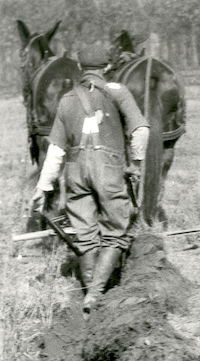If you grew up on a farm or currently live on a farm, you might not think of adding additional exercise to your routine, as many farm chores require physical activity.
I remember my grandmother telling stories of picking a barn of tobacco, feeding the farm animals, cleaning the stalls and keeping up the home place, all as part of a day’s work.
The meals she cooked were filling and the meats were fried; butter, fatback and lard were necessities for flavoring the vegetables, casseroles and getting the biscuits just right, not to mention the red-eye gravy. Yet through all of these rich, though somewhat unhealthy, meals that my grandmother prepared, served and raised a family on, she remained thin as a rail. As a matter of fact, all of the young ’uns she raised on the farm (including my dad) were pretty lean.
Now, I’m not suggesting that it’s healthy to eat like this as long as you’re working hard, but the physical portion of my grandmother’s daily routine kept her in great shape.
Obviously, farming today isn’t what it used to be. Fewer people are actually involved in growing the food and fibers that supply the country’s needs. Today, new technology, like four-wheelers, various all-terrain vehicles and hydraulic farming equipment, has alleviated some of the backaches. They have also taken a lot of physical activity out of the daily tasks at hand, causing even country folk to be a little less active.
I will admit that, because of technology, we are able to get more done on a farm in one day than compared to the early 1900s (and that’s a good thing, considering how precious time is). But have we literally taken too many steps out of farm life?
My point is this: If you have a small farm, large farm or just a few acres, try to consciously change how you carry out some of your routine tasks in an effort to remain or get physically fit. Walk your property instead of always riding the four-wheeler. When you walk your property, you’re more likely to notice the details of the farm; you might pick up on a gap in the livestock fence or you might notice weed problem areas in your crops. You can better assess animal health and behaviors when you walk by them. You will be more in tune with the needs of your property, and you will burn calories and get fit.
No one’s property is just alike. If you’re like me, owning a piece of land is something special and taking care of it is a No. 1 priority. Likewise, your health should also be a high priority, so that you can maintain and share that land with generations to come.
Whether you live on a farm or just enjoy maintaining your home landscape, I challenge you to incorporate more safe physical activity into your life while working on your property. Maybe not every time, but at least sometimes, pick up that shovel and use that wheelbarrow before you hop on your tractor. Like all good things, your health and your farm will improve over time.
For more tips on getting and staying healthy from University of Georgia Cooperative Extension, sign up for Walk Georgia, a free, Web-based fitness program designed to encourage physical activity and exercise through accountability and community.
Walk Georgia provides free fitness tracking, research-based knowledge and resources on fitness to help Georgians get physically active. The website enables users to track their activities and record fitness progress. Users can see how they stack up against other individuals in their county and the state. They can also create custom group challenges.
Walk Georgia is supported in part by a grant from The Coca-Cola Foundation. For more information and to sign up, go to WalkGeorgia.org.







